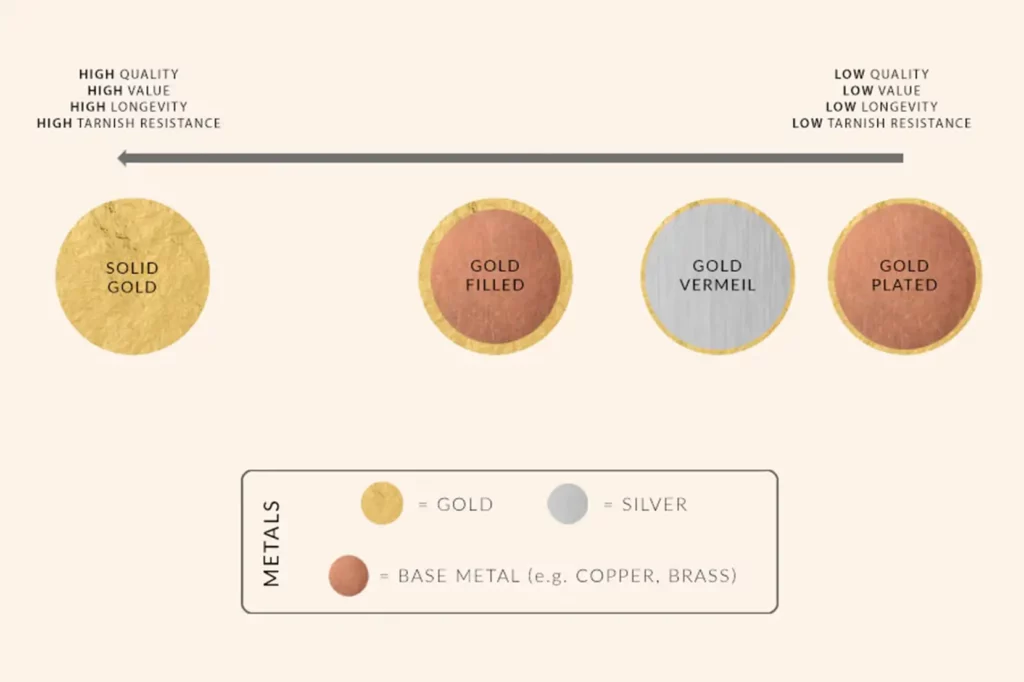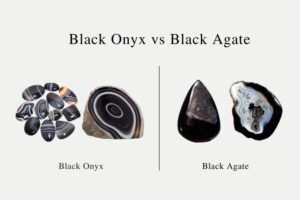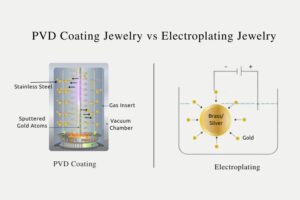When purchasing items that appear to be made of gold, understanding the various metallic components that make up the item can help one avoid being duped.
This piece examines the different qualities of distinct gold materials to help you understand what you need to look out for before investing in any gold jewelry.
The various terminologies “gold filled,” “gold vermeil,” and “gold plated” all refer to the thickness of a gold coating and the type of base metal used in the manufacture of an item.
Gold Plating Thickness Chart
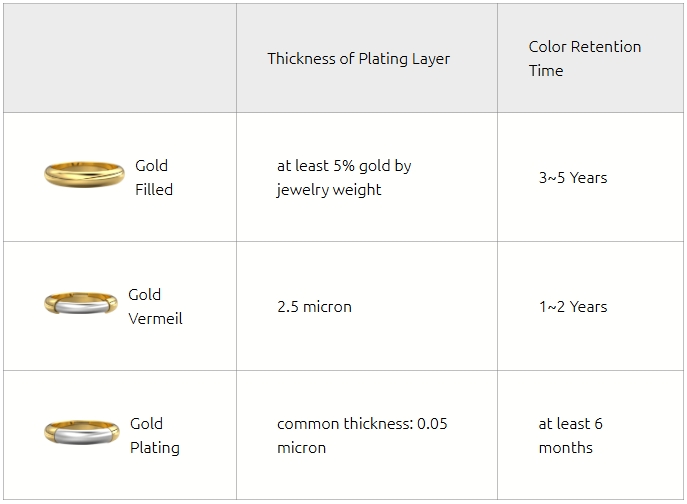
What is Gold Filled?
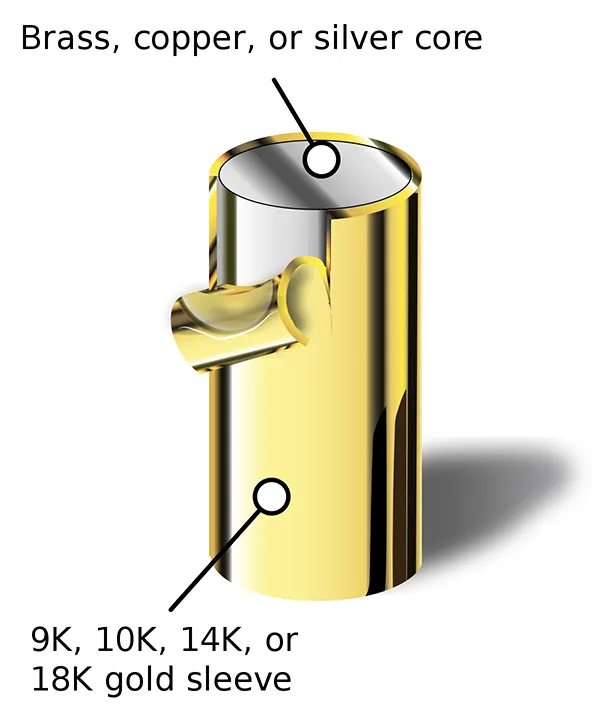
Although gold-filled may sound like solid gold, it is not. It describes a mixture of gold and brass (sometimes silver) that has been mechanically bonded or chemically bonded to form a bond. A lot of high-quality gold-filled jewelry looks like solid gold. A piece must have around 1/20th of its weight in gold to be considered gold-filled. In certain regions of the world, gold filled is sometimes referred to as “rolled gold.”
To comply with US law, the gold content must make up at least 5% of the overall weight. In rare circumstances, the terms “rolled gold plate” and “gold overlay,” but not “gold-filled,” may be used lawfully if the percentage is less than 5%.
Given the thickness of the gold coating, gold-filled jewelry can endure up to 3 years and won’t tarnish, fade, or flake easily. When wearing this, there will not easily cause issue to people with sensitive skin.
What is Gold Vermeil?
Gold vermeil is a method of gold coating that originated in the 19th century and has gained considerable popularity among jewelry lovers.
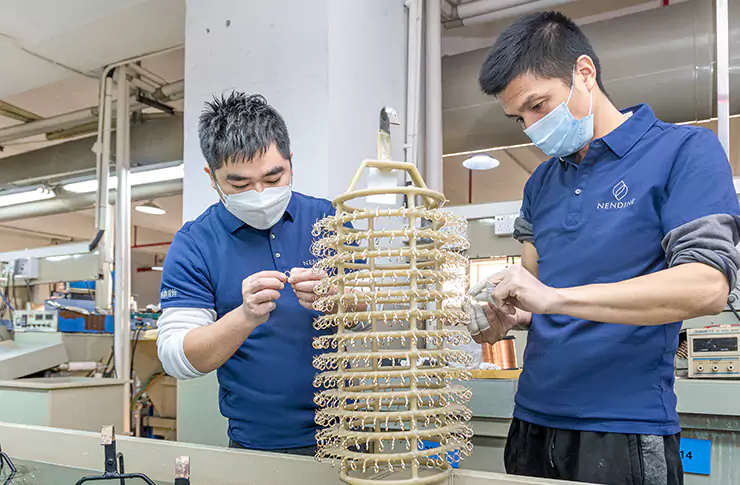
So what exactly is gold vermeil?
Gold vermeil is a premium form of gold plating that employs pure or sterling silver, which is also known as 925 silver, as the base metal upon which a thin layer of gold is coated using electroplating.
Electroplating is, in essence, a chemical process through which a metal coating is placed on a solid object. In gold vermeil, the metal coating is gold, while the solid object is sterling silver.
Just as in “gold filled,” the term “gold vermeil” is legally regulated. For a gold-coated item to be considered vermeil, it must have a base made of sterling silver, and has a minimum thickness of 2.5 microns (in the US).
The minimum thickness is different in some countries. For example, the minimum thickness in Canada is 1.0 microns (a micron is 1/1000th of a millimeter).
What is Gold Plating?
Gold plating is the most economical of the three different categories of gold plating. This is because the required standard for gold thickness is very low. There are a few other factors responsible for the cheapness of gold-plated items, which we will look at later in this article.
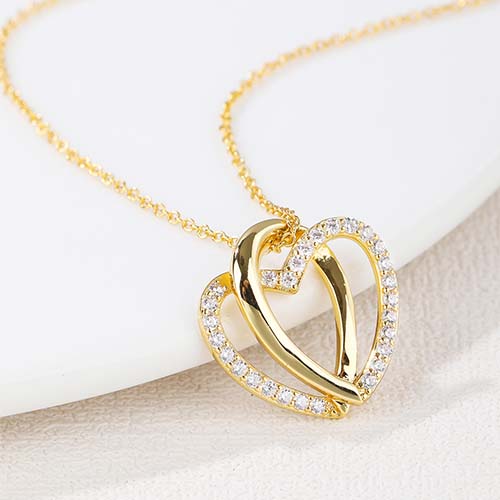
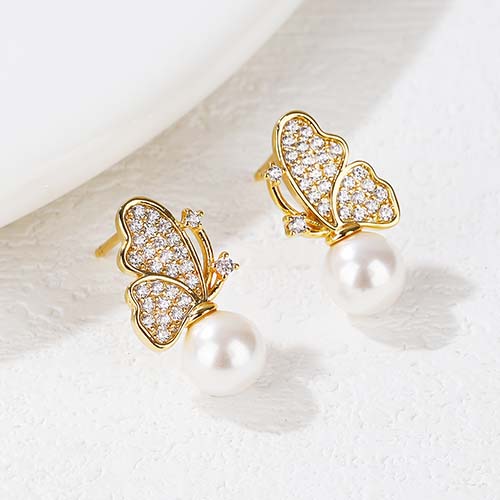
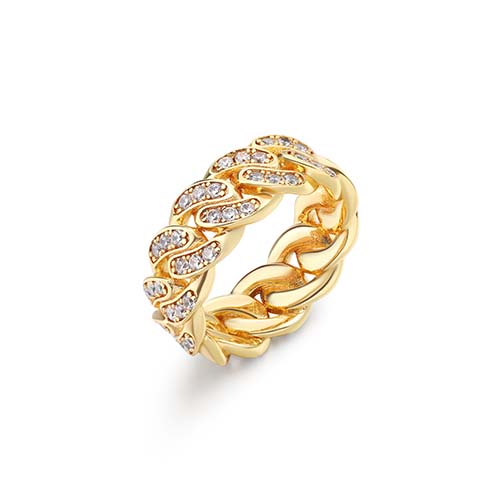
Gold plating is a term that refers to items in which a thin layer of gold has been applied by means of a chemical reaction known as electroplating or electrodepositing to a base metal or an alloy (usually copper, brass or sterling silver).
What Are the Differences Between Gold Filled, Vermeil, and Plating?
Having examined the meaning of these terms, we will now examine the differences between them using a number of characteristics.
Base Layer & Manufacturing Process
The base material and manufacturing process go a long way in determining the price and durability of gold-coated items.
As we have said earlier, gold-coated items are items in which a layer of gold has been applied to a base metal or alloy.
There are two different processes through which a gold coat can be applied. They are electroplating and mechanical bonding (in a process involving the application of heat and pressure).
Now, let us consider each of them individually and see the base metal or alloy and manufacturing process they employ, which has been studied by a trustworthy custom jewelry manufacturer.
Gold filled
The base material usually used to manufacture gold-filled items is brass. However, other metals such as copper and silver are also sometimes used.
Other than the noteworthy thickness of gold in gold-filled items, the manufacturing process involved in their making is one of the reasons for their costliness. They require expensive technology to make, which drives up the cost of their production.
In gold-filled jewelry, there are 2 methods to make gold filled jewelry, i.e. mechanical bond & chemical bond. For mechanical bomd, heat and pressure are used to mechanically bond a layer of solid gold to the core metal. Chemical bond is a process to bond a layer of gold through electroplating. The gold coating will not flake or peel off quickly.
Gold vermeil
For a material to be called gold vermeil, it has to have a base of sterling silver.
When you see a .925 stamp on your gold piece, know that it means that the base material is sterling silver or silver that is 92.5% pure.
The manufacturing process involved in making vermeil items is electroplating. This process involves using electric current to deposit a layer of gold on the base material (sterling silver).
Gold plating
In gold plating jewelry, brass, copper, nickel, zinc, silver, or any other type of metal or alloy may be used as a base material. The manufacturing process involved here, too, is gold electroplating.
Thickness and The Amount of Real Gold
Another aspect in which the three categories of gold-coated articles differ is the respective thickness of their gold coating and the amount of real gold contained in them.
- Gold Filled
The minimum amount of gold in gold filled is 5% of the total metal weight of the item. Gold-filled items usually have markings on them depicting their karatage. A karat is 1/24 parts of an item’s gold content. As a result, if a gold piece has a 1/20 12K G.F. marking, it means that at least 1/20th of 12 Karat gold is present in its weight.
- Gold Vermeil
The minimum thickness of the gold coating in vermeil is 2.5 microns. The purity of gold in vermeil varies anywhere between 10K to 24K.
- Gold Plating
The common thickness of the gold coating in gold-plated items is 0.05 microns. The purity also varies anywhere.
Durability
The durability of the gold layer in the three classes also varies greatly. Their durability is a function of the thickness of the gold coating. Thus, items with more gold are more durable than those with less.
- Gold Filled
Gold-filled items have the highest longevity among the three categories we are considering. This is because they have a thicker layer of gold alloy than their gold-plated counterparts. Depending on how well they are managed and the quality of the material itself, gold-filled jewelry can last up to 3 years without tarnishing. Ideally, gold-filled items do not easily flake, fade, or wear with use. It fades like solid gold.
- Gold Vermeil
With proper care, high-quality gold vermeil can last up to two years. However, by this time, usage would have already begun to show.
Even though gold vermeil’s durability is inferior to that of gold filled, it is still significantly more durable than gold plating because it has a coating of at least 2.5 microns.
- Gold Plated
This class has the least longevity among the three. It is safe to say that it is not made for long-term use. It is for “fast fashion.” It gives you a trendy look, which lasts for only a few months before tarnishing begins to show. The common thickness of gold coating is 0.05 microns in this type of item, so it fades quite fast. In Nendine, you can opt for a thicker plating layer, which delivers color retention at around 12 months.
Cost and Price
As a result of the different processes involved in their production, the base metal used and the thickness of their gold coating, gold filled, gold vermeil, and gold plated items do not have the same cost of production nor price range.
- Gold filled
Making gold-filled items takes a significantly higher amount of gold and requires expensive technology not readily available to lower-end jewelers and price-sensitive consumers. These are the factors responsible for the priciness of gold-filled items.
- Gold vermeil
Gold vermeil is somewhat expensive to manufacture due to the base material (sterling silver). Gold vermeil also has a gold coating thickness of 2.5 microns. This makes it more expensive than gold-plated items.
- Gold plated
Gold-plated items are the cheapest to make. They do not require expensive base materials and have a very thin layer of gold coating (common thickness 0.05 microns)
Gold Plating vs. Gold Dipped vs. Gold Coating Jewelry
What is Gold Dipped Jewelry?
Gold-dipped jewelry is the same as gold-plated jewelry, both of them means adding an extra layer of other metal on the base metal. For example, 18k gold dipped brass means that the jewelry piece is made of brass, and then plated with a layer of 18k gold.
What is Gold Coated Jewelry?
Gold-coated jewelry is even more direct in explaining the result of jewelry plating. Gold-coated jewelry is identical to gold-plated and gold-dipped. However, coating does not necessarily mean plating, for example, e-coating is a technology used to coat jewelry with a thin layer of resin for protection or color.
How to Care and Maintain
Caring for gold-plated items is straightforward to practice. To understand the care and maintenance of these items, a good knowledge of the working process of certain tarnishing agents is necessary.
A good place to start is oxygen. Oxygen is an oxidizing agent that is present in the air around us and in water in its dissolved form. When water or even air comes in contact with jewelry, the oxygen component combines with the metals to form metallic oxides, which tarnish or dull the shine of these objects.
Body sweat, oils, and lotions also leave a coating on gold-coated jewelry and tarnish them eventually.
With the above in mind, here are a few tips to care for and maintain your gold jewelry:
- Wearing gold-filled jewelry in the ocean or a swimming pool is not recommended because salt and chlorine can damage it. Most importantly, if your piece is vermeil or gold plated, try to avoid water by all means.
- Do not wear your jewelry when working out or performing strenuous activities because the sweat generated can tarnish your jewelry.
- Store your jewelry in an airtight bag to limit its exposure to oxygen.
- Keep your hands free of makeup or lotion before handling jewelry.
- Do not apply perfume, hairspray, or body spray while wearing jewelry as they contain chemicals that can tarnish them.
- After each use, jewelry should be cleaned with a damp cotton ball or microfiber cloth to remove surface dirt and smudges.
- Store your jewelry pieces individually to avoid them rubbing against each other, as this could cause damage.
Key Takeaway
Unfortunately, not all of us have the financial means to purchase the finest gold jewelry, despite the fact that it is very attractive and complements one’s wardrobe. As a result, concessions have been made to lower the cost for almost everyone. However, this compromise entails the buyer having to forgo durability in favor of quick fashion. Not too bad, in my opinion. However, if you have the funds to buy expensive gold jewelry, do so because it is profitable.
